Saturday, January 24, 2009
Adventure of a Lifetime: The Magic that is Sri Lanka
This is a copy of a journal post I wrote during my first visit to Sri Lanka in the several months spanning 1999 and 2000 of the Christian calendar. A friend urged me to post it as a record to my children that their mother is more than just a suburban housewife. But, most likely they will just think that I'm crazy, which, upon reflection, is actually my choice of the two. It was also prompted by a discussion on Open Salon about the Sarvodaya Shramadana Movement, and my friends and experiences there. As I said to Deb, "Magic happens to me everytime I go to Sri Lanka." The truth is that it's more about mysticism and a connection to those who have a connection with the Divine, than about magic. It's about time for more magic and mysticism. I guess I'm "homesick" for Sri Lanka. It's been since 2005.
Celebrating January 1, 2000 in Sri Lanka
Momo brought the message from Dr. Ari that I was to be at his place at 8:45 in the morning to be ready to leave for Anuradhapura. He changed the time from 1:00 so that he could make it to his appointment to kiss the Bodhi tree before evening, and so that I could get to the district center to start my research. So, I got myself to bed by 1:30 a.m. after sad phone calls from mom and dad and Richard and the kids, and after stuffing my things into a backpack while gathering extra toilet paper from Karun-aka, and winding up my mosquito netting.
On the morning of the 1st I got up too early, to an unusually great Canteen breakfast of kiri bat or milk rice. Milk rice is served on all auspicious occasions, the first day of the New Year being one. Served with it are a delicious concoction of shaved coconut with peppers and hot onions, called polsambol. I then walked over to the guardhouse where Dr Ari was waiting. He shepherded me to his home and insisted that I have ANOTHER breakfast, as he was supposed to wait for a visitor (I being the only visitor there) to eat the first bite of food on the first day of the New Year for good luck. Realizing how historic this was, I ate again-- another great breakfast of kiri bat. We waited around his house for a very long time while people from inside and outside of Sarvodaya came to prostrate themselves before him and wish him their respect on the New Year. Literally, people brought beetle leaves in their hands, and placed themselves on their knees, on the floor in front of him, head down, arms outstretched in front of them in prayer. I spoke to his wife, Neetha-aka, who from time to time was the receiver of such prostrations herself.
FINALLY, we left his house only to get in his vehicle, and drive about a half a mile to Chardika’s house, who is his eldest daughter. She was sick, sick with some sort of asthma-- so sick that it worried me to look at her. Dr. Ari gave her a speech about plugging into the healing energy and told her that she was one of the reasons he was going to Anuradhapura (“too many doctors in the family… they need to be totally vegetarian and meditate to health”). She prostrated herself in front of him as we walked out the door to the garden and out to the car.
We then got in the car and drove another mile to Vishva Lekha, the Sarvodaya printing press, where there were probably a hundred people waiting for Dr. Ari to begin the “family gathering.” After several long speeches, the longest by Dr. Ari about Christ and the significance of the year 2000, we went upstairs to eat even more food. I couldn’t eat another bite but could manage to drink more tea. More prostrations. After staying there for another hour or so, we picked up two of his best friends-- Susiri, his friend who runs the Vishva Lekha press, and Dharma the retired principal of the boy’s school where he used to teach-- and headed out to what I supposed would be Ahuradhapura (although at this point I wasn’t sure where we were going to end up).
I fell asleep in the back seat of the car, in spite of Dr. Ari trying to talk to me. I awoke to Dr. Ari the race car driver. He was accelerating and breaking around vehicles, cows, bicycles, people on foot and tri-shaws, yelling back to me “Denese, I’m testing out the machine! But don’t worry I am protected by the gods!” I was pretty sure that if anyone was protected it was he, although I didn’t know how many folks on the road would be safe if he kept up the erratic driving.
I was so full and possibly car sick that I couldn’t possibly think of food, but Dr. Ari kept saying, “Denese is sooooo hungry.” So, finally we stopped under the shade of a forest of beautiful old trees in a protected area, and ate a boxed lunch (actually the rice, curries and chutneys are wrapped in saran wrap-- a substitute for banana leaves-- then wrapped in newspaper and placed in a picnic type box. The newspaper wrapping keeps the food warm). We got back in the car and Susiri and I slept again for an hour and a half until we were almost to Anuradhapura, some 200 miles from where we started out, which because of the road conditions in Sri Lanka is like driving 400 plus miles.
We arrived at the District Center to Winsor’s and Thalatha’s house, which is inside the iron gates of the Anuradhapura District Center. It is a lovely landscaped place, where luscious flowers surround the house and where the beds outside appear “swept.” Fat buds from the pink poinsettia trees dripped over the doorway, and clay pots loaded with red, chocolate and orange anthuriums were strewn on the ground in the front yard. Interspersed around them were small containers filled to the brim with different sizes of ferns and bright, delicate flowers.
I tip toed around the plants and inside the house where we had tea and fruit. Then we were whisked off to see the Bodhi tree-- but not before Winsor made sure that I had my passport. I was in Dr. Ari’s car, and Winsor led the way in his white Mitsubishi truck through numerous military checkpoints guarded by men and women soldiers who were carrying some pretty serious looking guns, wearing camouflage-gear with flack jackets--complete with grenade belts encircling their waists. Each of these soldiers was sitting or standing around black and red 10X6X6 foot corrugated metal huts, all of which were hidden from our initial view behind big black, white and yellow striped oil drums that had, what else, flowers planted on top!
Apparently most people walk to the tree. However, because of Dr. Ari’s stature they arranged for him to have a pass and we were allowed to drive to the center of the ruins, even side-stepping most of the check points and searches. Five years ago the LTTE massacred 300 pilgrims there on a holy day, with this guard structure being the result. Finally, we hit the end of the road and got out of the car, barefoot, walking to several stations where we were searched, the guys at the “man’s” side and me at the “woman’s” side. Finally, we entered through the main gate, where we were thoroughly searched—breast and groin pats-- again at an inner chamber, usually in a hut or enclosed room with a ratty curtain hanging at the doors to shield the room from outside view.
We then headed straight to a wroght iron “tree” of many little cups that were to be filled with a bottle of amaretto colored oil we brought. In each of these, we placed little wicks that we lit (the Singhala version of the votive candle at the Vatican) but only after Dr. Ari told me to “touch the bottle of oil” as he poured it in the little containers. Not knowing what to do, I said a prayer each time I touched the bottle. We meditated and prayed, and as I looked around I saw gray monkeys sitting stoically on top of the 2500-year-old ruins in back of us, some with their young in their laps. Then, Dr. Ari lit a hand full of incense. He gave one bunch to me and pointed to where I should place it. Following directions, and with great effort, I stuck probably 20 sticks of incense, one-by-one in the brass containers filled with sand awaiting such gifts.
After running past the candles and through a gate, I finally caught up with Dr. Ari, after which, we walked up the stairs to the Bodhi tree entrance. One of the district employees then offered me a tray of white, thick-budded lotus flowers, one of which I took. I walked up to an altar filled with flowers and prayed with my head down, hands in prayer with the flower in them above my head, and deposited the flower in an offering to their Lord Buddha. Just as when I was in the Vatican, my eyes filled with tears. We then sat and meditated. After a time, we left and went to another vantage-point farther away from the masses of people but facing the Bodhi tree, and meditated again. From time-to-time people would recognize Dr. Ari and would prostrate themselves before him.
We went to another alter, inside a building with a very large and colorful Buddha sitting in a meditative posture, and offered more flowers, which were promptly arranged according to color and type by attendants (different colors going to different locales). We finally left the center of the Bodhi tree and went to the head monk’s dwelling to offer gifts. When he didn’t come, Dr. Ari abruptly got up and left, leaving the gifts on a table. We exited the ruins without incident, driving past smiling guards carrying big machine guns.
We came back to Winsor’s house to more tea, and then Dr. Ari suddenly looked at me and in his high pitched voice, said, “are you going to come and see the show?” So, I said, “why not?” and I got in his blue car with he and his buddies and went several kilometers to a monk’s house who always helps Dr. Ari usher in the New Year. We showed up at this house and this smiling monk met us—and like all monks in Sri Lanka-- he was bald and dressed in an ochre colored man’s sari-type garment, called a Seeu’ra, reserved for Buddhist religious devotees. He was very jolly and laughing and told Dr. Ari that he woke-up that morning knowing that Dr. Ari would come. At that point he said he cleared his calendar and asked that the evening be left free for us.
He showed us into his cement home, painted many colors—blue, yellow, red and white-- with carvings outside around the door itself, on the stoop (carved out of stone) and on the walls. He showed us into a room with six white plastic lawn chairs against the wall, two of which had pink satin pillows decorated with semi precious gems on them, and he sat and chatted for quite a long while. Generally Dr. Ari didn’t translate for me until something of merit came up, or until there was something he wanted me to know. For example, he said that this monk said that the Bodhi tree used to be guarded by many gods and that he felt their presence whenever he went to the Bodhi tree. But, now with the military presence there, the protection of the gods had gone. He said that the gods still come to places where normal people worship, but no longer to the Bodhi tree.
We had tea and bananas, without the monk ever looking at me. We then went upstairs to an area outside of a small room where the doorway was decorated with ceremonial fans, brass objects and colored lights. It looked like Christmas. We prostrated ourselves outside the room, and then sat in a meditation posture, Dr. Ari’s two friends to my left, me at the center rear and Dr. Ari at the center front. Inside the little room the monk chanted and arranged flowers near the brass vases and urns on the floor, and lit white candles along a ledge on the wall in front of 28, 12-inch-high brass Buddhas that were symmetrically arranged there. He turned on more colored lights and sat down in front of Dr. Ari, who was at the forefront of our ceremony. The monk handed him a section of a long piece of twine. The monk unwrapped the twine from around a polished wooden handle that was attached to the top of the doorway at one end, and which was held by the monk at the other end. After arranging the twine he began a religious ceremony, where he would chant something and then Dr. Ari and his friends would answer (I thought of our Episcopalian ceremony, “and also with you”). The twine, I found out later was supposed to give Dr. Ari a multiplied dose of protection from the blessing. I didn’t know enough to chant so I held my head down and my hands up. This lasted about an hour and a half. Incense was lit. More candles were lit. More flowers were distributed. Sometimes chanting led into sermons.
After the monk left the little room ahead of us to join us in the outer sanctum, he picked up an urn of water, which he poured into Dr. Ari’s hands, which then Dr. Ari drank and poured over himself. Before I had a chance to think-- “Please no standing water!-- he poured the water into my hands, which I drank and washed over my face, arms and hair. Dr. Ari and the monk reserved water in their hands and in an urn, respectively, and came outside and sprinkled the water over Dr. Ari’s car, inside and outside.
When the ceremony was over, we went outside in the rear yard to his Bodhi tree, which he said was placed there through some miracle (bird) after he arranged a special place for it. The tree was surrounded by a cement structure, which was decorated by flowers and plastic leis. We then filled clay pots 12 times with water from an outside faucet and gave the pots to Dr. Ari who fed the water to the tree while saying prayers. The monk then lit small square candles around the Bodhi tree, and placed white flower offerings, and offerings of food and fruit-- which Dr. Ari had me “touch”-- on the ledge of the cement structure encircling the tree. He lit incense, which he placed by the root of the tree, and we again sat and he chanted, as Dr. Ari and Winsor and his assistant responded to him.
Finally, we came outside to the entrance area of his house. Dr. Ari had told me in the car on the ride over that this monk has been telling him his future for the last 19 years. He said that he had never been wrong. He said that he had saved his life when he was being stalked by the Premadassa regime. When he was on their hit list, he came up to Anuradhapura to talk to this monk, and the monk literally wouldn’t let Dr. Ari go anywhere alone. He led him in his separate vehicle, and at one point the military shot at the monk’s car, at which point, the monk got out of the car and approached the soldiers who acted as though they had made some sort of mistake. He said that one year the monk, channeling another entity, was particularly angry with him for visiting sites and removing people’s severed hands that were on display as a warning from the LTTE. Although Dr. Ari had not told the monk of these activities, the monk raged, “why did you do something that I should be doing? You are protected unless you continue doing such stupid things!” Then the monk hit him three times over the head with the staff he carries under his left armpit (like General Patton). Dr. Ari says, under other circumstances these blows would have killed him. He said that some political leaders, namely Premadassa, had tried to secure the monk’s help for personal aims, but that this monk only does good and not evil. Dr. Ari also said that in 1992, he wasn’t sure he was going to survive Premadassa’s death threats, and he asked the monk what course of action to take for the New Year. The monk told him to leave the country as much as possible until after May 1st , when he could come home safely. So, Dr. Ari accepted as many engagements abroad as possible. On May 1st Dr. Ari came home, which was the very day that President Premadassa was killed.
Back to the monk: The monk approached another small brightly colored cement building directly across from the entrance to his home, decorated with urns, incense, and three gods, Krishna, Vishnu and Ganesh. He went in. Dr. Ari and his friends crammed in the narrow doorway and I sat directly behind them on the steps. There were two women directly behind me below the steps, probably the monk’s sister and niece. At one point everyone prostrated themselves and the women motioned for me to “get down!” I did. At one point I was praying, head down, hands outstretched, and one woman motioned for me to “look!” I did. The monk was shaking a brass device wrapped around his left hand, filled with little pebbles--which sounded like a moracca or tambourine-- and he was chanting. His head was gyrating in what looked like a 180-degree swivel, back and forth, back and forth. He was in a trance. His facial features were contorted so that he looked unlike the happy smiling monk I had seen just minutes before. He was still laughing, but in a different way, and in a different voice. He then talked to Dr. Ari for around an hour, with the only sounds being uttered by Dr. Ari being “Oooh-wuu” (or “yes”). Several different characters came through this monk, one of which was supposed to be the God Krishna.
Much of what the monk said I can’t repeat either in written or verbal form. I am sworn to secrecy. However, I can say that Dr. Ari is supposed to continue with his present course of action, meditating around Sri Lanka and especially in the conflict zones until he has ¾ of the population behind him. The monk said that Dr. Ari shouldn’t align himself with anyone, or place himself at odds with anyone. But, that by his actions, he will lead his people to peace. He also said that Vishva Neketan will be a successful international peace center.
After he had finished with Dr. Ari, one of his incarnations took many limes in his hands and blessed them. He then started handing them to everyone. Dr. Ari motioned for me to come forward and I took a lime. We kept it in one hand, then the other, placed it over our chests, on our stomachs, over one knee and then the other, and over our toes. He then took the limes back and cut them in half and placed them in a bowl. He then took a piece of white string and cut a length of the string by burning it with a candle. He wrapped the string around Dr. Ari’s wrist, tied it and cut it again (the second cut is to cut away the evil spirits from your body for the New Year) and blessed it. Then he did the same blessing with another length of string for me, then for Dr. Ari’s two friends. Finally the monk came out of his trance. I am to leave the string on my wrist until it falls off and it will protect me through the year. I’ve now decided that Rich can come to Sri Lanka as I have enough protection for the whole family.
Before we left we chatted, the monk’s sister and niece trying to feed me AGAIN. I finally declined food! Then he told fortunes by looking at our palms (he said Dr. Ari would be in the presence of many wild women… and I was hoping he wasn’t thinking of westerners!). Finally, he told my fortune after Dr. Ari thrust my right hand up to his face. He said that although I come from a rich country and I have many things, I am not a person who is much impressed by “things.” He said that I was going to become a very spiritual person. And that I would develop my spirituality to a point beyond even those people born into Buddhism.
We talked more and left, but only after I paid my respects again (on the floor, head down, arms outstretched).
These photographs were not taken during my New Year's adventure. I refuse to take pictures of people worshiping, and I don't take pictures of soldiers/guards/armaments mostly because I would rather keep my camera. Rich took these at another time.
If you're wondering what this post has to do with the 'everyday life of a woman from the NW living in the Deep South', the answer is, well, almost everything. If I hadn't been dragged here by my husband and been forced to remain, which resulted in an early mid-life crisis and a semi-nervous breakdown, which then led me to rethink what I was going to do with my life, I would have never become re-involved with the Sarvodaya Shramadana Movement and Dr. Ariyaratne, or newly acquainted with Sarvodaya USA, and Charlie Joiner (and his friends at Nature's Spirit), who offered me a place on this trip as a part of a Kellogg grant he helped to secure on spirituality, sustainability and community, which then led to this experience. There is no doubt in my mind that Louisiana and Sarvodaya are deeply interrelated parts of my life. How did I first come to know Sarvodaya and Dr. Ariyaratne? At 21, I was studying 'social development' in Vermont, and 'found' some of his writings. They were really the only exciting concepts I found related to international social development. And when I wrote to him, now 30 years ago, he wrote back!
Subscribe to:
Post Comments (Atom)

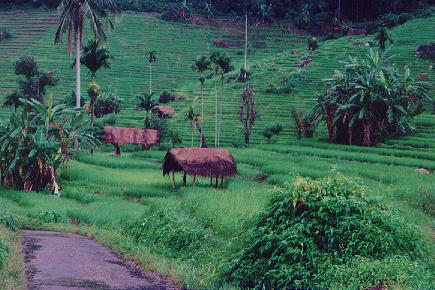
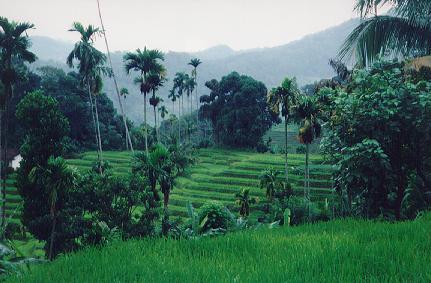
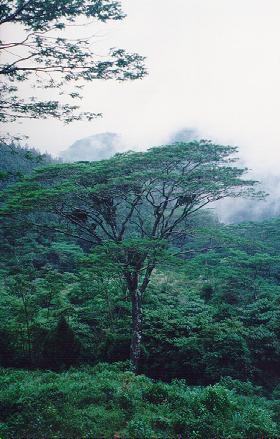
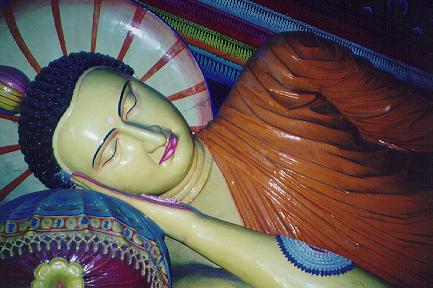
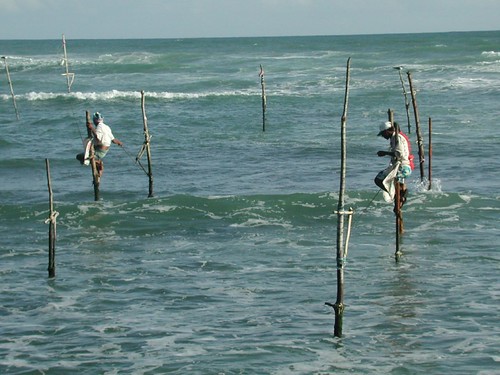
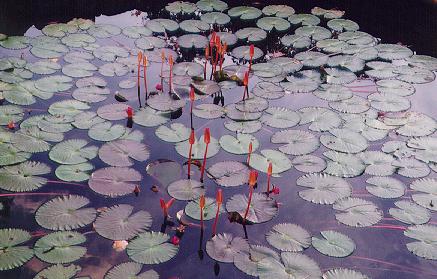
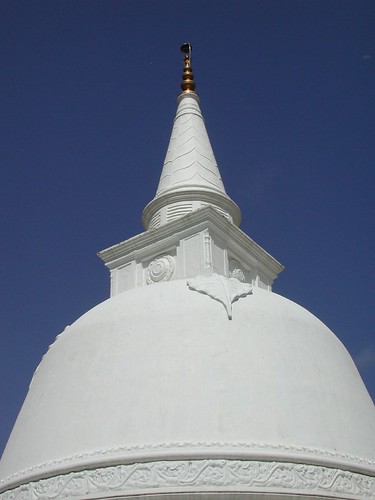
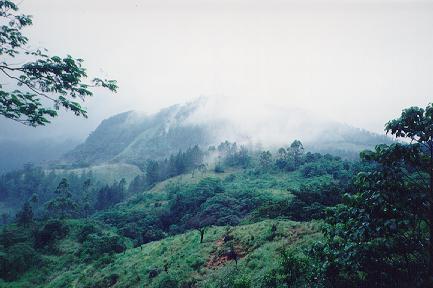
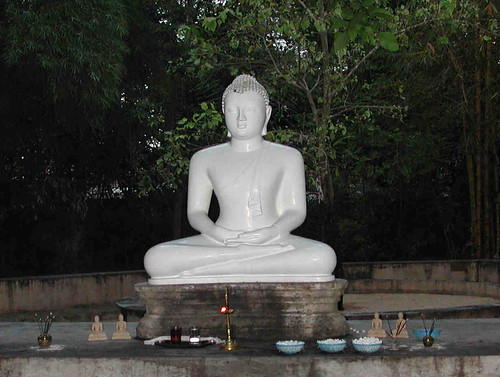
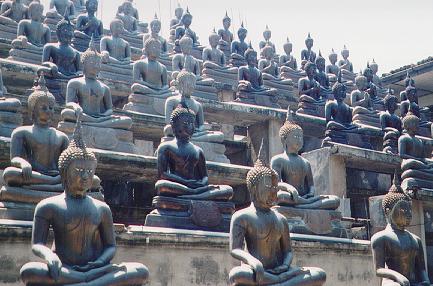

Gorgeous story well told!! You are a wonderful writer and this is an unbelievable tale. I am more and more impressed with you as I get to know you better. You are a unique and special person, and I'm not surprised you ended up in such incredible company. You should post this on OS, perhaps in two parts.
ReplyDeleteThis, like many of my stories, are personal and although I like to have people read them, I don't want to prostitute them to people who don't know me.
ReplyDeleteI'm just glad that you encouraged me to post this. If you hadn't, it would have been lost forever. You should have seen me writing away on my laptop to the light of my flashlight only, into the wee hours of the morning in my little room in Thalata and Winsor's house. I might take notes of research interviews, but not of people's religious ceremonies. I was afraid that if I didn't write it down immediately, that it would fly right out of my head.
Wonderful account and fabulous photos!
ReplyDeleteThank you willow. I've been lucky in life.
ReplyDeleteYour blog is fabulous and your header enchanting.
The photos are my husband's. Although, I take one or two now and then.